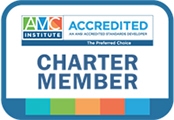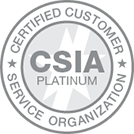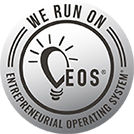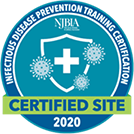By Craig Broadbent, Director of Web Solutions and Client Engagement
After attending the 2014 annual American Society of Association Executives (ASAE) Technology Conference & Expo, there were a handful of emerging trends that stuck out as being extremely important topics for associations and non-profits.
The Expanding Stratosphere
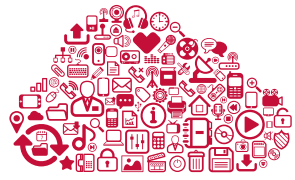
The forecast in 2015 calls for increasing clouds — cloud services, that is. This trend isn’t new, but it continues to expand. Network manufacturing giant, Cisco estimates a 24 percent compounded annual growth rate between 2013 and 2018 relative to cloud services (Cisco Global Cloud Index: Forecast and Methodology, 2013–2018). Directionally, the market is in agreement with Cisco’s specific projections.
In the world (or should I say, sky) of Cloud Services, there are three general categories.
- Infrastructure as a Service (IaaS) — At the more base level, this includes things like servers, storage load balances, and network services.
- Platform as a Service (PaaS) — Typically a software platform on which applications are developed by the subscriber, such as database, web server, and other development tools.
- Software as a Service (SaaS) — Software applications in the cloud that subscribers interact with directly, such as Association Management Software (AMS), Learning Management Systems (LMS), Customer Relationship Management (CRM), email, marketing automation, games, etc.
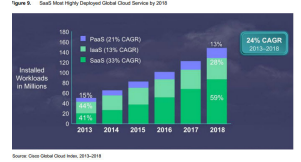
Note that from the Cisco projections, while all categories are growing over the next few years, the SaaS category is slated to comprise almost 60 percent of the market. Much like the content and data explosion we are experiencing today, we are likewise seeing a tremendous increase in the number and types of services available. Mobile apps are a big part of this trend. There are mobile apps and SaaS services for just about every imaginable business and association function.
At the 2014 annual ASAE Technology Conference & Expo, I took particular note of the growing number of exhibitors, specifically in the categories AMS, LMS, and mobile event apps. The market is definitely in expansion mode. Associations seem to be taking advantage of this trend. In a 2012 cloud services report, Nonprofit Technology Network (NTEN) found that over 90 percent of respondents were using some kind of cloud-based solution, while 80 percent were using more than one. SaaS solution can provide non-profits with many efficiencies and low-cost services for a variety of needs.
While the vast number of offerings can be a bit daunting, there are plenty offerings to fit many different configurations and needs of associations. Nevertheless, having experienced the dotcom bust of 2001, experience tells me that at some point in the not-toodistant future, we will also see a consolidation in the offerings. As you evaluate which services and solutions might meet your needs, a few considerations (besides functionality) might include:
- Vendor consideration. Do your due diligence. Consider privacy and security of membership data, transactions, and so forth; solution availability and performance guarantees; and stability of the vendor, as demonstrated by client base (type and volume etc.).
- Bright, shiny object syndrome. Don’t be distracted by or tempted to go with the newest gadget for the sake of novelty. Develop a technology strategy and discipline yourself to stick with it. What, initially, might appear to provide freedom, flexibility, and low costs now, could later prove to be a ball and chain when strategic circumstances dictate your needs to go in a different direction.
- Determine your needs and requirements up front. The process is akin to adage about grocery shopping; make a list and don’t shop while you’re hungry. Otherwise, you’ll inevitably spend more than you intended and end up with more of what you don’t need and less of what you do
Micro Location
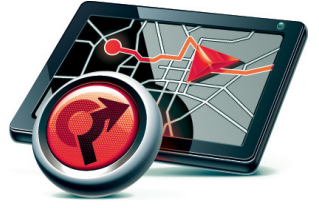
Micro location is something that might best fit into the category of an emerging trend. It’s still very much in the early-adopter stages. The basic idea behind it is that your location can be determined by using a signal from your smartphone. Apple’s iBeacon, Google’s Nearby, IBM’s Presence Zones, Gimbal, among other use different competing technologies to approach solving the challenge. The wifi approach uses the wifi signal of the mobile device to determine location. While this tends to be less accurate, it only requires that the user have their wifi turned on. Another approach, Bluetooth Low Energy (BLE), uses bluetooth capabilities and the use of beacons located throughout a space to make a similar location determination. The downside with the BLE approach is that it requires users to download and turn on an app.
Much of the excitement and testing of this technology is currently happening in the retail industry, for delivering timely and very target offers, etc. During the 2014 ASAE Technology Conference & Expo, ASAE tested a solution, based on the BLE approach that determined traffic patterns for the event sessions, including volume and location. Instead of swiping badges, they were able to get a sense of session attendance based on the data from the app.
From an association perspective, tracking event participation and traffic flows presents an interesting application and potential use. It will be interesting to watch as other applications are sure to emerge as well.
WHAT TECHNOLOGY TRENDS ARE YOU SEEING IN YOUR ORGANIZATION? AH is always on the lookout for trends whether it be in membership, non-dues revenue, or technology. Be sure to check back often to see what else is trending!

